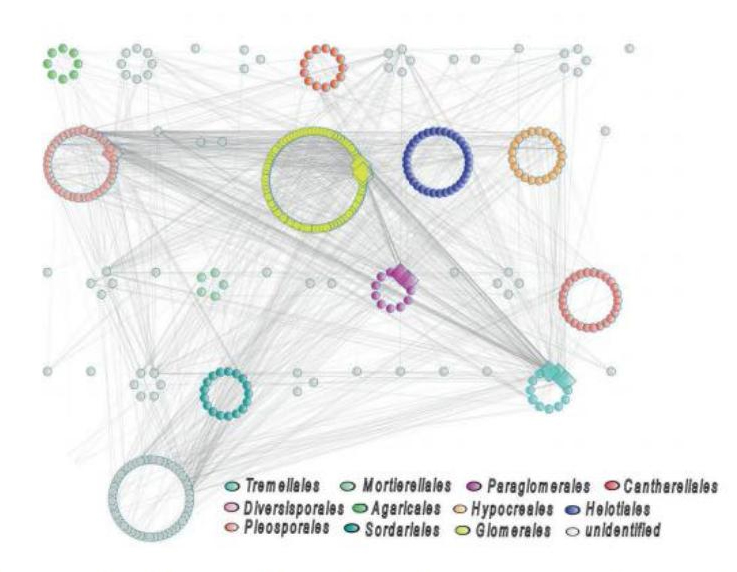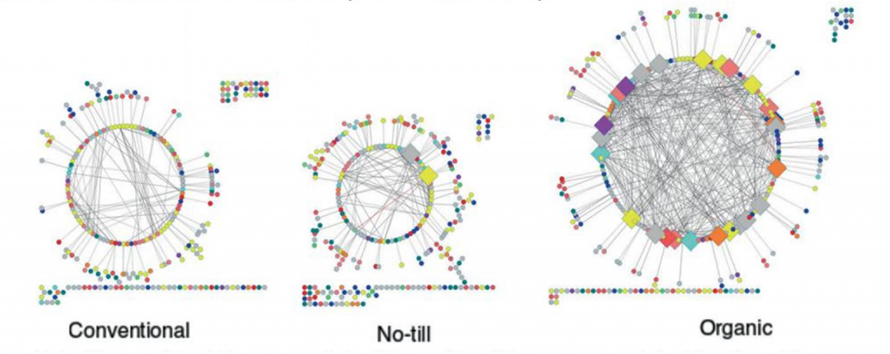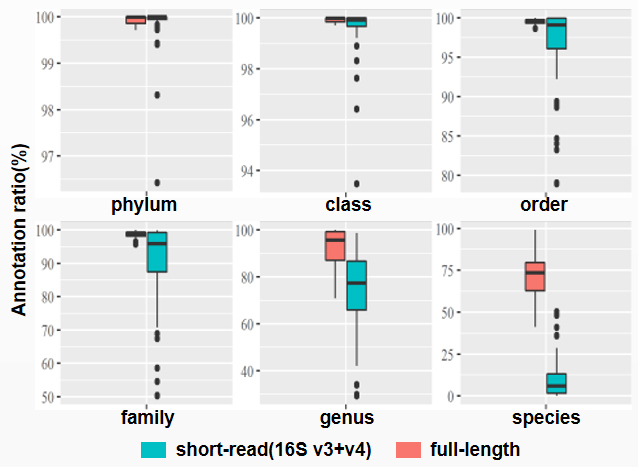Highlights
Agricultural intensification has become increasingly problematic due to its adverse environmental effects including poor nutrient-use efficiency, goundwater eutrophiation, degradation of soil quality, etc. Alternative farming systems including no-till and organic farming have been widely adopted to reduce the harm. Microbial community plays an indispensable role in the productivity and sustainability of agroecosystem. However, it is rather unclear that how different farming systems affect root microbiota.
Experimental Design
Experiments
Soil and root(DNA) samples were from wheat fields from 60 agricultural farmland (20 each)
Grouping: 1. Convention (with tillage); 2. Convention (no-tillage); 3. Organic farmland
Sequencing strategy: Full-length amplicon sequencing (ITS)
Primers: ITS1F-ITS4 (targeting the entire ITS region ~630 bp)
Sequencing platform: PacBio RS II
Bioinformatic Analysis

Results
On average of 357 OTUs were identified per site and a total of 837 OTUs of all 60 sites. Alpha diversity of root fungal communities was not showing significant difference among three farming system. However, three distinct clusters were formed in beta diversity analysis, indicating a strong effects of farming system on root fungal community structure.

Figure 1. Alpha diversity (Shannon index and community composition ) and beta diversity analysis (canonical analysis of principal coordinates) on root fungal communities
Ten keystone taxa were defined based on overall network of fungal communities across three farming system: top 10 nodes with highest degree, highest closeness centrality and lowest betweenness centrality were selected. Seven of them belonged to mycorrhizal orders.

Figure 2. Overall network on root fungal communities of three farming systems
Farming-system specific networks indicated a considerably higher connectivity in organic network with twice more edges and more connected nodes than no-till and conventional network. Moreover, the organic farming network harbored much more keystone taxa(diamond) compared to the rest, which supported its complexity and connectivity

Figure 3. Farming system-specific root fungal networks
A strong negative association between agricultural intensity and root fungal network connectivity was observed. Random forest analysis revealed main drivers of keystone taxa: soil phosphorus, bulk density, pH and mycorrhizal colonization.

Figure 4. Agriculture intensity and network connectivity across three farming systems (A and B); Random forest analysis(C) and Relationship between agricultural intensity and AMF colonization (D)
Technology
Full-length amplicon sequencing
As “Third Generation Sequencing” coming onto the stage, the limitations in targeted regions and troubles in de novo assembly have been overcome. Pacific Bioscience (PacBio) has successfully extended the reading of sequences to tens of kilobases, which allow us to obtain full-length reads of 16s rRNA (1,000 bp-1,500 bp) in bacteria or 18S rRNA (1,500 bp-2,000 bp) and ITS regions (400 bp-900 bp) in eukaryotics. The widen view of genetic field greatly enhanced the resolution of species annotation and functional genes. The long concerned issue on base accuracy has been solved by PacBio CCS self-correction, which generate HIFI reads with over 99% read accuracy.

Performance in OTU annotation
Taking advantages of both long reads and high-throughput, the accuracy of annotation can be dramatically increased and achieving a “species-level” resolution in microbial identification.


Reference
Banerjee, Samiran , et al. “Agricultural intensification reduces microbial network complexity and the abundance of keystone taxa in roots.” The ISME Journal (2019).
Tech and Highlights aims at sharing most recent successful application of different high-throughput sequencing technologies in various reseach arena as well as brilliant ideas in experimental design and data mining .
Post time: Jan-08-2022



